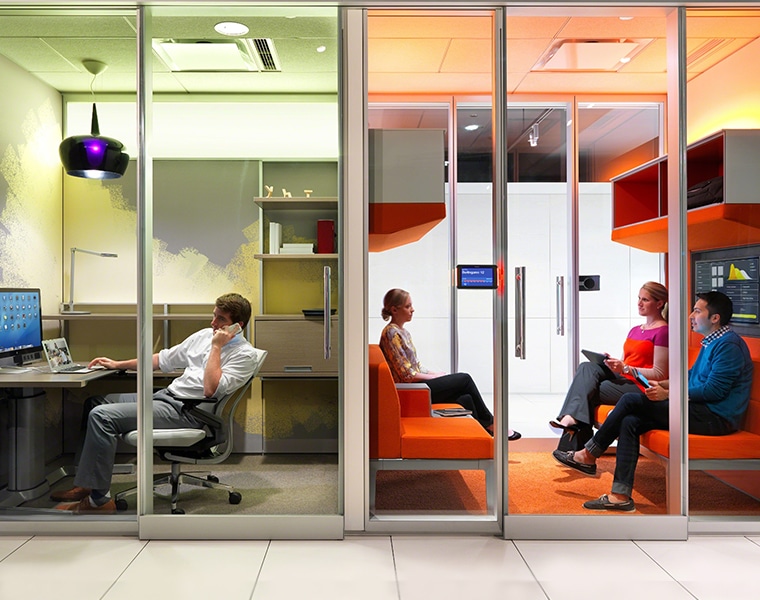When we think of noise pollution – building construction, busy roads with traffic or airplanes flying overhead would usually spring to mind. These are all common environmental noises that we experience each day, however noise pollution is not just found outside.
Noise pollution can also take place in your workspace; from telephones, to air-conditioning units alongside multiple conversations, all create conflicting sounds. This is an issue that is particularly common in open plan offices. Not only are these noises distracting, they can also be really frustrating and leave workers unable to complete daily tasks effectively.
We experience noise pollution due to the reverberation time of sound – this is the time it takes for sound to fade out. In an open plan office usually the sound will travel across the room until it hits a hard wall and then bounces back into the room. However, while that sound is travelling there are other sounds that are conflicting with it before it has had the chance to fade out.
Did you know that good acoustics can make environments more productive, with 70% of office workers saying that they could be more productive in a less noisy office environment.
So what is the solution? It is as simple as A, B, C…
Absorb – capture reflected sound
By adding absorptive ceiling tiles, wall materials and flooring you can reduce the sound energy and the level of noise reflected off surfaces back into the workspace.
Block – stop sound travelling
Vertical barriers in the form of walls and doors of a meeting room are the most effective at blocking sound; however within an open plan environment it is not always possible to escape to a meeting room.
Cover – mask unwanted noise
Sound masking is the only solution that can maintain the ideal ambient noise. Sound masking consists of a number of loudspeakers installed within the ceiling that generate sound at a very specific level (unique for different environments) in order to mask unwanted noise and reduce the frequencies in background sounds.
It addresses the acoustic variations across the workspace to achieve a noise level that isn’t too loud and isn’t too quiet.
